|
The Dictionary of Horse-Drawn Vehicles by Smith states:
“Drag Shoe. Skid pan or wedge used as a crude brake, when jammed under a rear wheel. Also known as a Drag Bat (this was apparently a country name for a Drag Shoe).”
The Drag Shoe is carried by most European and American coaches and is used as an external brake for going downhill when the gradient of the hill is too steep for the brake alone to retard the motion of the wheels. On British coaches the Drag Shoe hangs on a bracket attached to the brake block on the passenger side, but in America and the rest of Europe, where one drives on the right side of the road, it should be attached on the driver’s side to enable the Drag Shoe to run parallel with the curb.
The Drag Shoe is attached to the coach via a hook and chain that is hooked to a bracket on the front axle. The hook and chain should be long enough, when unhooked, to reach the middle of the back wheel when applied. The Drag Shoe is constructed of steel and looks very much like a slipper. The base of the shoe should be about six inches wide. A wide shoe is preferred as it causes much less damage to the road surface than a narrow shoe (one which is just wider than the wheel of the coach itself). It must also be remembered that the Drag Shoe was primarily designed for use on gravel roads not our modern tarmac roads, though it is still a very effective brake nonetheless. The braking efficiency of the Drag Shoe can be much enhanced if the driver can keep close to the edge of the road, enabling him to find and utilize any loose gravel typically found on the road’s edge. This is especially helpful should the road become wet.
The front edge of the Drag Shoe has a curved front edge so that the shoe rides over most obstacles in its path, however, it is advisable these days to have someone stand on the rear step to keep an eye on the shoe in case an obstacle is hit that causes the shoe to jump off the wheel .
Side view of a Drag Shoe:
This shoe would be better if the foot were bigger and the front had a greater curve like a ship’s bow.
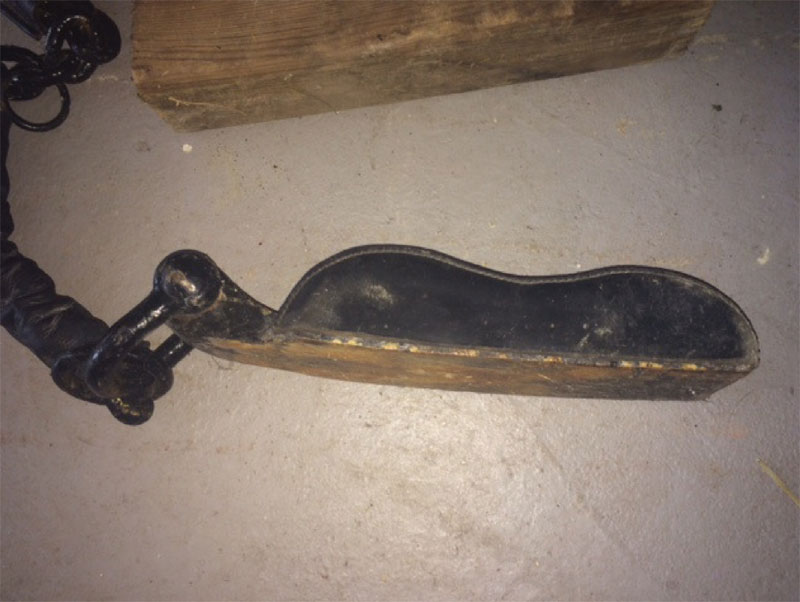
Fairman Rodgers in his Manual of Coaching suggests the following as an addition to your Drag Shoe:
“A hook large enough to hook around the rim of the wheel and covered with leather, is sometimes attached by another chain to the same part of the axle. This is hooked on the rim of the wheel below where the brake touches it, and holds the wheel in case the skid comes off. Instead of having a large hook, the chain itself is sometimes made long enough to go around the rim, that part of it which touches the rim being covered with leather. At the end of the leather-covered part is a small hook which goes into one of the links of the chain.”
This method involving a second chain is found on many original coaches; the mystery as to its use thus explained.
Applying the Drag Shoe:
We typically only place the shoe under one back wheel, as this allows the coach to pull straight. If we skidded both back wheels the coach could fishtail and possibly turn over. When the Drag Shoe is applied to the curb side, back wheel of a coach, it allows the coach to be pulled against the camber of the road, keeping it straight. However, if one were to apply the shoe to the other back wheel instead, the coach could be pulled in the same direction as the camber of the road making it very difficult to keep the vehicle straight. As the coach descends the hill the driver should also use his hand or foot brake to help with the braking, but must be careful not to lock the other back wheel.
The shoe is unhooked from its bracket and placed in front of the wheel. One member of liveried staff should stand with the horses whilst the other applies the shoe. When the driver is given a clear signal to remove the handbrake and move off, if the shoe has been properly placed in the correct position, the wheel rolls into the shoe and locks the wheel. The grooms then mount the carriage, with one remaining on the step to ensure that the Drag Shoe remains in position. On a Road Coach, fitting a Drag Shoe would be the guard’s job, but on a Park Drag it would the job of the second coachman.
Here we have Richard Patrick with the Monarch Coach applying a normal Drag Shoe.
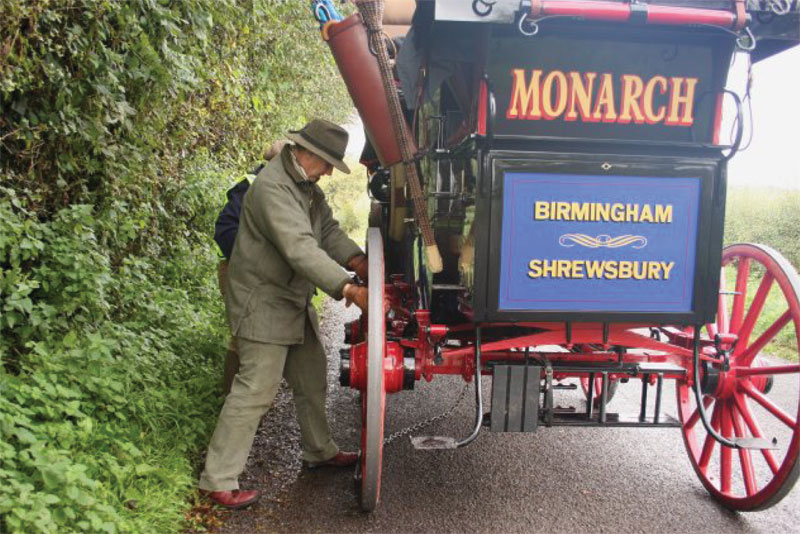
Riding on the step.
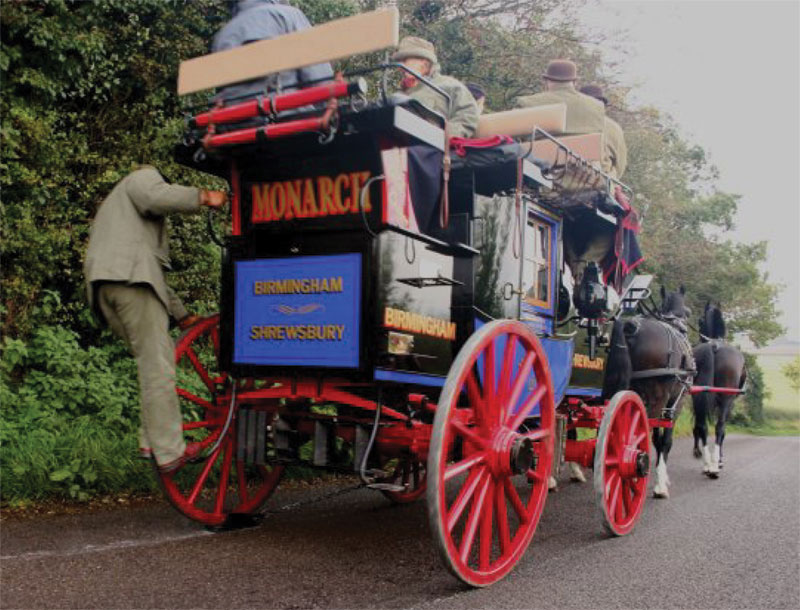
When removing the Drag Shoe one should be at the bottom of the hill on a flat surface or, if possible, on a slight incline. This makes reversing the horses to get the wheel of the coach off the Drag Shoe easier. After a long downhill decent the shoe can become quite hot.
Andreas Nimitz of “Coaching in Bavaria” developed a unique method to improve the traditional Drag Shoe so as to accommodate modern roads .He did this by modifying the actual shoe to take a pine-faced board, held on with a dovetail to make for easy fitting and removal. Pine was used as it has the best co-efficient to drag and is fairly cheap and readily available. The top of the board that goes into the dove tail is made of a harder wood (such as beech or ash). This enables the pine section to be replaced when it gets worn. As the coach descends the hill, the board actually smolders and burns, so it is important that the groom monitors how much board is remaining. Again, if the road surface is wet, more friction can be gained if the groom walks just in front on the coach and spreads course sand or fine grit as it moves along.
The generally accepted rule of thumb with a loaded coach is that the gradient of the hill should not exceed 16%.
Applying the abrasion board to the modified Drag Shoe.
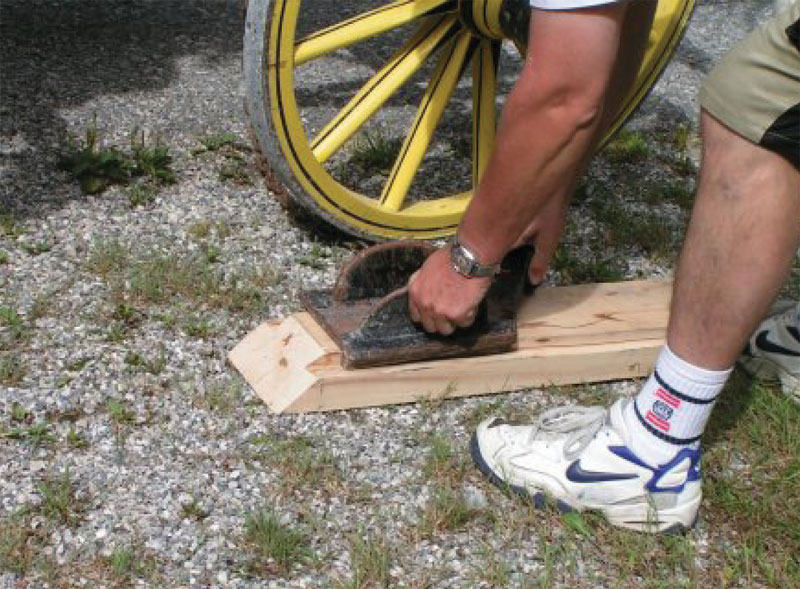
Applying the modified Drag Shoe to an Omnibus.
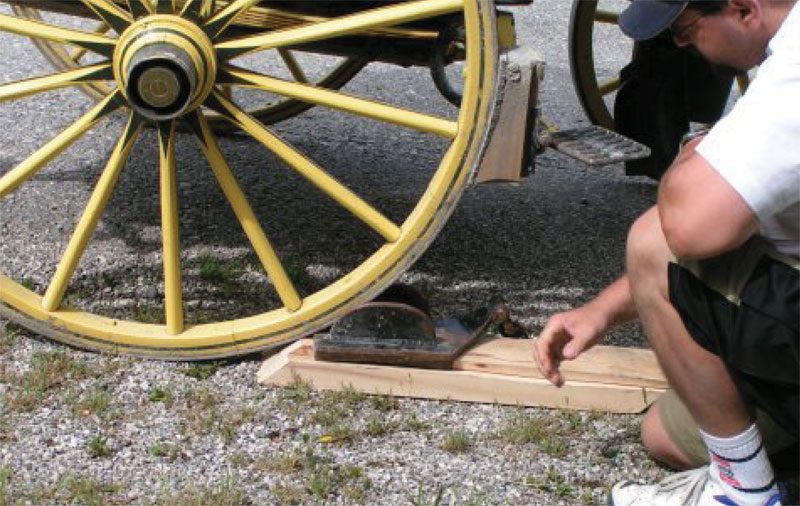
Almost there.
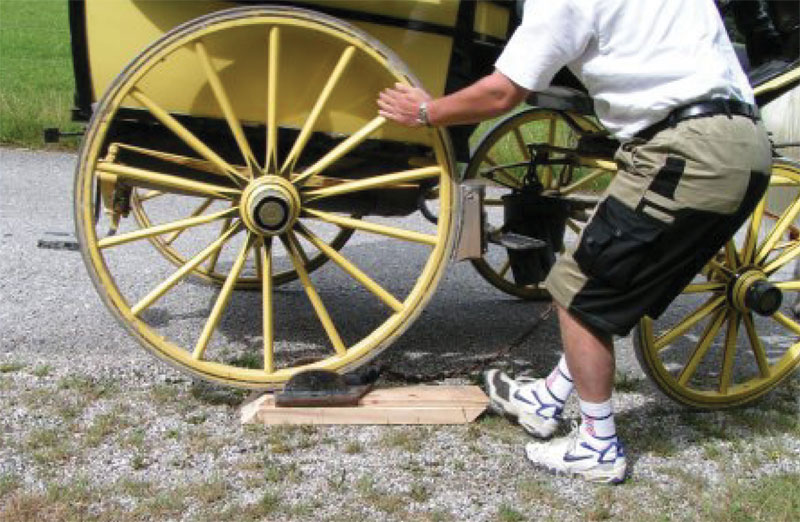
Shoe applied; ready to go.
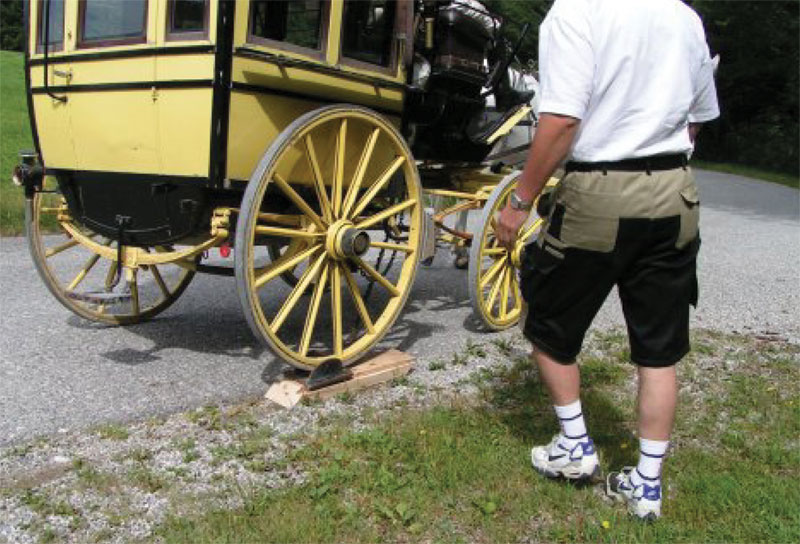
Shoe in action traveling straight down the road.
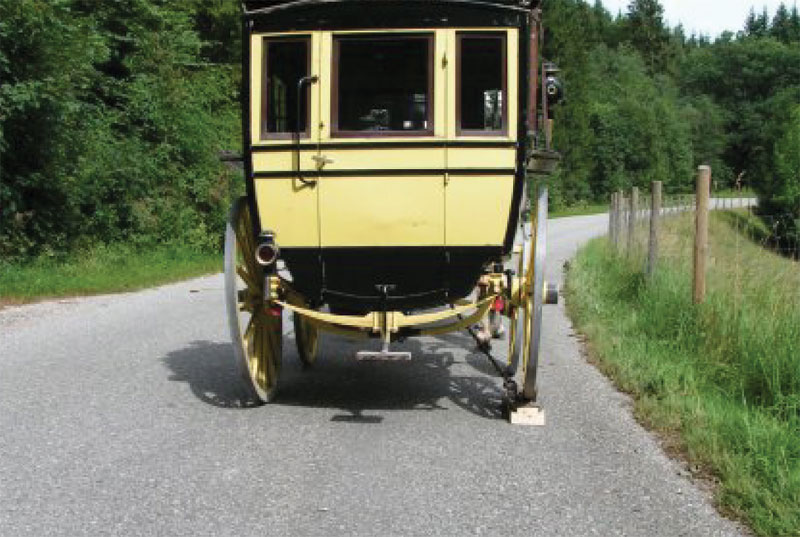
Paul Bennett is a team member of The Equine Expert LLC, a multi-discipline equine expert witness and consulting firm offering legal expert witness and consulting services in court cases, legal matters and business affairs. Paul is an expert in carriage driving, carriage horses and equine therapy. He has been a professional coachman for years in both Europe and the US and is currently the Director for Swiftsure Therapeutic Equestrian Center in Idaho. For more information on Paul visit www.theequineexpert.com or you may contact Paul at Paul@theequineexpert.com.
|

